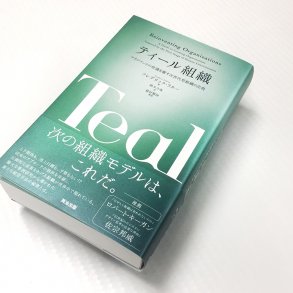By Lia Aurami for Enlivening Edge Magazine
There are significant differences in the kinds of conversations that take place in the Orange, Green, and Teal stages of development of adult consciousness. The stages were popularized by Frederic Laloux’s book Reinventing Organizations, but this article could be valuable to you even if you are not familiar with his framework of categorizing the stages of human consciousness operating in organizations.
All three kinds of conversations are valuable, yet you can’t have a Teal conversation until you have learned how to have a Green conversation, and you can’t have a Green conversation until you’ve learned how to have an Orange conversation, and so on with respect to earlier stages. By the nature of stages of consciousness development, they are a maturational progression. That means each requires skills, capacities, and knowledge developed in the previous stage, but builds on those and goes beyond them, very analogous to age-specific conversations.
This article focuses on the kinds of conversations that take place in the workplace. If you understand the differences and benefits of each kind, then whatever makes sense to you as best suited to the situation at hand, you can use for greater success. The descriptions below are merely cartoon sketches of a vaster, complex, and detailed territory.
Orange conversations
Everyone listens to the boss, manager, executive, or supervisor, whoever is in charge of them and their work. There aren’t a lot of “conversations:” someone talks, someone listens. The result of a conversation is that what is needed for the work gets conveyed. Among those who speak, it is often those who are most successful or most expert who have the most status and get listened to the most.
Conversations tend to be objective, 3rd-person, logical, pointed, and rational. Success and productivity are the name of the game, and indeed Orange conversations produce a great deal of quality of life in the world.
In Orange conversations, in contrast to the previous Blue stage, tradition is questioned and innovation is valued. And in healthy Orange conversations in contrast to those infused with an unhealthy version of the earlier stage of Red, the best ideas to lead to success get listened to the most, not the ideas of the boss person or the loudest or most dominating person. Common Orange conversations that are actually infused with a lot of unhealthy Red are those “showing who’s boss,” or seeking to climb the corporate ladder at someone else’s expense
Green Conversations
People whose predominant stage of consciousness is maturing beyond Orange into Green find Orange conversations sterile, dull, and limited. Green wants their own and every voice to be heard. Green is learning the richness and nuances involved in emotional intelligence, and conversations are often about feelings and relationships. There are trainings where one learns to converse (to listen as well as talk) in a way that is respectful and allows for feelings.[1]
Decisions tend to be difficult to arrive at in an organization predominantly at the Green stage, because every voice has to be heard and given equal weight. Consensus is in some ways an improvement over some kinds of Orange decision-making processes, but it has severe limitations. (There might in Green also be intolerance of those who want to get things done; daring to step outside the group norms of consensus is dangerous)
Teal Conversations
Having learned Green skills and developed Green capacities such as emotional intelligence, Teal begins to find productivity and decision-making too bogged down in an environment where relationships become more important than getting things done.
Those moving into the Teal maturational stage don’t discard any of their Green or Orange skills and capacities, which are available for use where situationally most appropriate. However, these folks have new and different kinds of conversations, using new ways of engaging with others, that take such things as equality and respect into account, and add new systems, new procedures, new processes, that are more result-oriented, more “purpose-driven.” For Teal, purpose is the focus, not relationships, even while good relationships and “wholeness” are essential.
One hallmark of Teal conversations is that they take multiple perspectives into account and can incorporate whatever is useful for the purpose at hand. By contrast, Orange can rarely consider more than one or two perspectives which are often in conflict, while Green gets lost in considering multiple perspectives and has a hard time finding its way out.
Another hallmark of Teal conversations is that they are about whole, complex, living systems. They build on Orange understanding of mechanisms and structures, and on Green understanding of relationships and processes. Teal sees how those form systems. Teal conversations are often about how to optimize social or organizational systems for everyone involved.
Generative Conversations
One kind of conversation, that naturally emerges in people to whatever extent they have access to the Teal stage of consciousness, has come to be called a “generative conversation.” If a Green conversation is like tossing a ball back and forth, a Teal generative conversation is like each person contributing a block that cumulatively builds a structure. The Teal generative conversation is more complex and requires more skills. The initial purpose of a generative conversation might not be known at the beginning; sometimes a conversation turns generative just emergently, as it goes along, and ends up with an unanticipated result.
Here’s an example: Over lunch with each other, co-workers might begin talking about why this is a great restaurant. Someone who knows the owner mentions their compensation program because the program in the co-workers’ company happens to be in need of improvement. Someone comments on what’s good about the restaurant’s compensation program, and someone chimes in that it could be better if ———. Someone else gets the idea of how their own company’s current system is currently even better in some ways than that. Then someone says “If we made this change, then it would also be possible do that, which would further improve our system.” Someone puts in their experience at their previous place of work, in which a particular detail of compensation was done a certain way, and everyone likes that. And the conversation continues to build.
By the end, several people realize they all just happen to have developed a very clear and workable framework for a new and better compensation program for their company. Over lunch!
Not everyone spoke, necessarily, but no one felt left out. Everyone was mindful of keeping good relationships, but that was the background, not the foreground. No one lead and no one followed, but ideas gradually formed a pattern, a structure, a result.
It was the opposite of a brainstorming conversation, which doesn’t generate or build or have a coherent result, but similar in that ideas were not judged good or bad. They just naturally “stuck” in the conversation when they were on a path to somewhere the conversation was heading. Sometimes, looking back, one can sense what seems like an “unseen force” guiding people to say just the right thing at the right time to be best contributive to whatever is being generated.
Which kind of conversation is best?
Since a generative conversation takes place in a Teal-consciousness atmosphere, it is not superior to previous-stage types of conversations. [2] It is merely more mature. It will naturally emerge as people mature. So I can’t give you the steps and urge you to always have only generative conversations. The kind of conversation that’s best at the moment depends on the situation.
I can say, however, that if you are itching to get things done, and already have a lot of Green skills, knowledge, and capacities you might explore the template for generative conversations given in Otto Scharmer’s Theory U.[3]
And I can also say that if your Orange conversations are no longer satisfying, a shift toward Green conversations is your medicine. Developing the consciousness capacities reflected in Green conversations is the necessary foundation for having Teal conversations.
Whatever kind of conversation you find yourself in, perhaps you can use the ideas here to have fun identifying which stage of consciousness is reflected in the conversation. You might usefully consider what you personally like and don’t like about the way the conversation is happening. Then you’re on the maturational road to wisdom!
[1] Nonviolent Communication is one well-known training.
[2] Teal consciousness can handle more complexity but that’s not always what’s needed. A teenager is not superior to a 10-year.
[3] Theory U. If you like to study conversations as such, there are other ways of usefully categorizing and differentiating kinds of conversations such as Generative Dialogue, also developed by Otto Scharmer.
 Lia Aurami: Within Enlivening Edge, I energize a variety of roles to express my sacred life mission: to amplify our human capacity for living, working, and relating within shared higher consciousness. That optimizes the chances of success of transformative changes, by operationalizing collective and spiritual intelligence to help organizations be efficient and effective. I delight in creating and amplifying synergistic connections toward all that!
Lia Aurami: Within Enlivening Edge, I energize a variety of roles to express my sacred life mission: to amplify our human capacity for living, working, and relating within shared higher consciousness. That optimizes the chances of success of transformative changes, by operationalizing collective and spiritual intelligence to help organizations be efficient and effective. I delight in creating and amplifying synergistic connections toward all that!
Featured Image Photo by Christina @ wocintechchat.com on Unsplash




